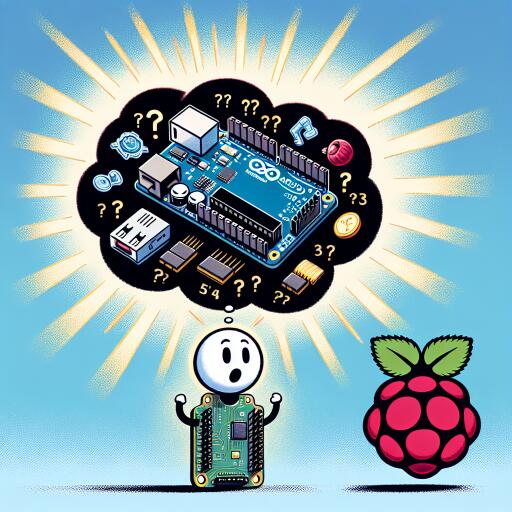Unveiling the Unique Capabilities of Arduino Over Raspberry Pi
When it comes to the world of Do-It-Yourself technology, Raspberry Pi often steals the spotlight with its impressive computing power and versatility. Yet, lurking in the shadows is another contender that, while less famed, boasts a set of unique abilities that the Raspberry Pi cannot emulate. Welcome to the realm of Arduino, a microcontroller platform that, despite its modest appearance, packs a punch in the arena of electronic projects and programming.
Both Arduino and Raspberry Pi cater to hobbyists with their affordability and the rich ecosystem of projects they support. However, delving deeper into the fabric of what they offer reveals fundamental differences that set them apart. Unlike Raspberry Pi’s single-board computer setup capable of multi-tasking and running a full-fledged operating system, Arduino simplifies the landscape to a microcontroller focusing on executing specific tasks with precision and ease.
This distinction is crucial and highlights why, in certain scenarios, Arduino is the undisputed champion. Below, we unravel three fascinating abilities of Arduino that Raspberry Pi, with all its computing prowess, cannot match.
1. Real-time Performance without Overheads
Arduino’s architecture allows it to shine in real-time applications. Its direct control over hardware with minimal overhead makes it ideal for projects requiring precise timing and immediate response to external inputs. Unlike Raspberry Pi, which juggles a variety of processes under an operating system, Arduino executes tasks with laser focus. This capability is crucial in scenarios like sensor data collection or controlling motors in a robotic arm, where split-second decisions make all the difference.
2. Optimal for Simple Projects Requiring Minimal Power
Arduino’s simplicity is its superpower in projects that demand straightforward logic without the bells and whistles of a full computing environment. It operates efficiently on low power, which is a boon for battery-operated or remote applications where energy conservation is paramount. Projects like weather stations, simple home automation sensors, or wearable tech benefit immensely from Arduino’s energy-efficient design, an area where the more power-hungry Raspberry Pi might not be the best fit.
3. Ease of Use for Beginners
For those taking their first steps into the world of programming and electronics, Arduino emerges as a guide with its beginner-friendly nature. The Arduino IDE (Integrated Development Environment) simplifies code writing and uploading, making it accessible even to those with minimal programming experience. Coupled with a vast collection of libraries and examples, it accelerates the learning curve, allowing newcomers to jumpstart their projects swiftly. This user-centric design is something that Raspberry Pi, despite its broader capabilities, cannot offer in the same capacity, especially for users aiming solely at hardware interaction projects.
These three capabilities of Arduino underscore its role as not just an alternative but a complementary force to Raspberry Pi in the diverse ecosystem of DIY tech projects. While Raspberry Pi excels as a mini-computer handling complex tasks, Arduino stands out in applications where simplicity, efficiency, and real-time performance are key. Together, they form a formidable duo, empowering tech enthusiasts to explore the boundaries of creativity and innovation in electronics and programming.
In summary, while Raspberry Pi offers a broad spectrum of computing prowess suitable for a variety of projects, Arduino specializes in providing a streamlined, efficient approach to specific tasks. Its real-time processing capabilities, low power consumption, and beginner-friendly environment make it an invaluable tool for dedicated applications. Whether you are a seasoned developer or a curious newbie, understanding the strengths of both Raspberry Pi and Arduino opens up a world of possibilities in the realm of DIY projects.










